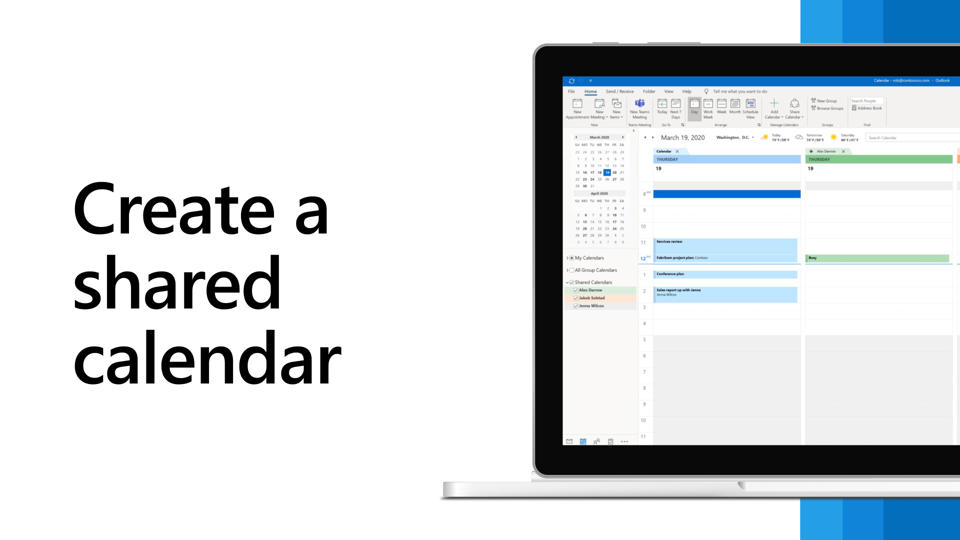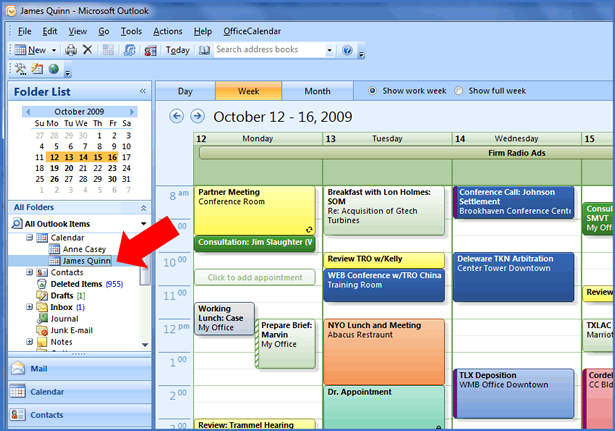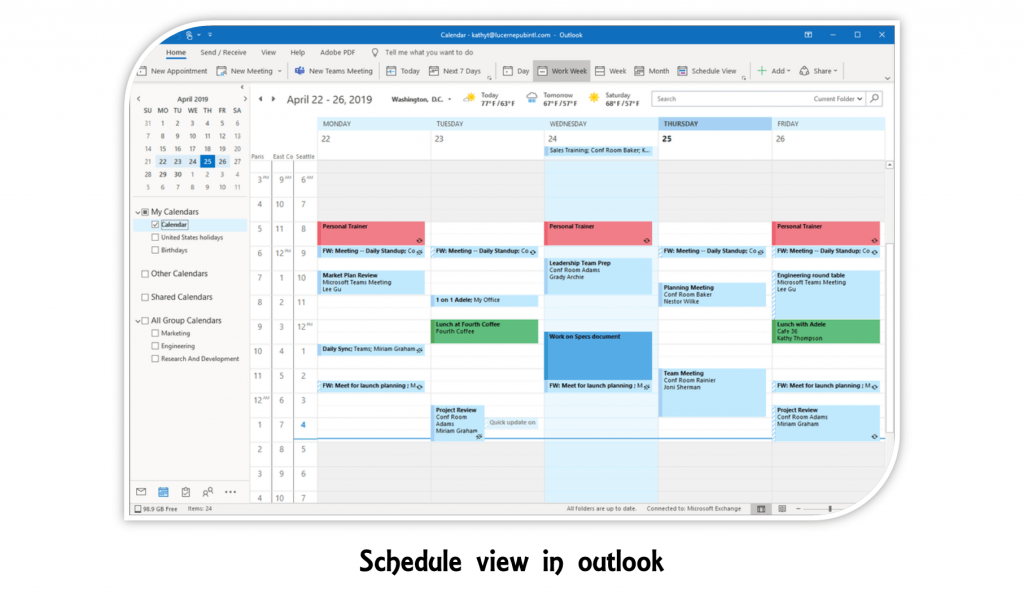Mastering Shared Calendars in Outlook: A Complete Information
Associated Articles: Mastering Shared Calendars in Outlook: A Complete Information
Introduction
On this auspicious event, we’re delighted to delve into the intriguing matter associated to Mastering Shared Calendars in Outlook: A Complete Information. Let’s weave attention-grabbing info and provide recent views to the readers.
Desk of Content material
Mastering Shared Calendars in Outlook: A Complete Information

Microsoft Outlook’s shared calendar performance is a robust instrument for collaboration, streamlining scheduling, and enhancing staff communication. Whether or not you are coordinating initiatives with a small staff or managing appointments throughout a big group, understanding learn how to successfully open, use, and handle shared calendars is important. This text supplies a complete information to navigating the intricacies of shared calendars in Outlook, addressing all the things from preliminary setup to superior troubleshooting.
Understanding the Advantages of Shared Calendars
Earlier than diving into the technical facets, let’s spotlight the numerous benefits of utilizing shared calendars:
-
Improved Collaboration: Shared calendars present a centralized view of everybody’s availability, eliminating the necessity for infinite e mail chains to schedule conferences or appointments. Crew members can simply see who’s busy and when, making scheduling considerably quicker and extra environment friendly.
-
Enhanced Transparency: A shared calendar promotes transparency inside a staff. Everybody can see upcoming conferences, deadlines, and appointments, fostering higher understanding and accountability.
-
Decreased Scheduling Conflicts: By offering a transparent image of everybody’s schedule, shared calendars drastically scale back the probability of scheduling conflicts. This protects time and prevents irritating rescheduling efforts.
-
Streamlined Undertaking Administration: Shared calendars might be instrumental in challenge administration, permitting groups to trace deadlines, milestones, and particular person process assignments visually.
-
Centralized Data: As a substitute of scattered particular person calendars, a shared calendar acts as a single supply of fact for staff scheduling, simplifying communication and making certain everyone seems to be on the identical web page.
Opening a Shared Calendar in Outlook:
The method of opening a shared calendar in Outlook is comparatively simple, but it surely varies barely relying in your Outlook model (desktop, internet, cell). Let’s discover the widespread strategies:
1. Opening a Shared Calendar in Outlook Desktop (Home windows & Mac):
-
Receiving a Calendar Invitation: The most typical method to entry a shared calendar is thru an invite despatched by the calendar proprietor. This invitation will sometimes arrive in your Outlook inbox. Merely open the invitation and click on "Settle for." The shared calendar will then seem in your Outlook calendar navigation pane.
-
Manually Including a Shared Calendar: If you have not acquired an invite, you’ll be able to manually add a shared calendar utilizing the calendar proprietor’s e mail deal with. Comply with these steps:
- Open Outlook and navigate to your calendar.
- Within the "House" tab, click on "Open Calendar."
- Choose "From Tackle E book…"
- Find the calendar proprietor’s e mail deal with within the deal with ebook and choose it.
- Click on "Open." It’s possible you’ll be prompted to decide on the extent of entry you will have (e.g., Reviewer, Editor).
2. Opening a Shared Calendar in Outlook Internet App (OWA):
-
Accepting an Invitation: Just like the desktop model, accepting a calendar invitation is the best methodology. Open the invitation in your OWA inbox and click on "Settle for."
-
Manually Including a Shared Calendar: If you could manually add a calendar:
- Open your Outlook Internet App calendar.
- Click on the "Open calendar" button (normally a small icon).
- Enter the calendar proprietor’s e mail deal with and click on "Open." Select your required permission stage.
3. Opening a Shared Calendar on Outlook Cell (iOS & Android):
The method on cell units is basically much like the online app. You will normally obtain an invite to just accept or manually add the calendar by way of the app’s settings. The particular steps might differ barely relying in your working system and Outlook app model. Seek the advice of the app’s assist part for detailed directions.
Managing Permissions and Entry Ranges:
The calendar proprietor has management over the extent of entry granted to others. Frequent permission ranges embody:
-
Reviewer: Reviewers can solely view the shared calendar; they can’t make modifications or add appointments. That is excellent for conditions the place you could maintain others knowledgeable however don’t desire them to switch the schedule.
-
Editor: Editors can view and modify the shared calendar, including, deleting, and altering appointments. That is appropriate for staff members who must actively take part in scheduling.
-
Proprietor: The proprietor has full management over the calendar, together with managing permissions and deleting the calendar.
Understanding these permission ranges is essential for making certain the shared calendar features as meant. The calendar proprietor ought to fastidiously assign permissions primarily based on every person’s position and duties.
Troubleshooting Frequent Points:
Regardless of its simplicity, you would possibly encounter some challenges when working with shared calendars:
-
Calendar not showing: Verify your calendar navigation pane. The shared calendar is perhaps hidden or situated in a unique folder. Strive looking for the calendar proprietor’s title.
-
Permission points: If you cannot edit or make modifications to a shared calendar, it is doubtless resulting from your assigned permission stage. Contact the calendar proprietor to request elevated permissions.
-
Synchronization issues: If the shared calendar is not updating appropriately, guarantee your Outlook is correctly related to the server and that your community connection is secure. Strive restarting Outlook or your system.
-
Conflicts with current appointments: For those who’re making an attempt so as to add an appointment that conflicts with an current appointment on the shared calendar, Outlook will sometimes provide you with a warning. You will must resolve the battle earlier than continuing.
Superior Options and Greatest Practices:
-
Colour-coding: Assign totally different colours to varied shared calendars to simply distinguish them at a look.
-
Classes: Use classes to additional manage appointments throughout the shared calendar, for instance, by challenge or staff.
-
Recurring appointments: Successfully make the most of recurring appointments for recurrently scheduled conferences or occasions.
-
Reminders: Set reminders for necessary appointments to make sure nobody misses deadlines or conferences.
-
Delegation: The calendar proprietor can delegate entry to a different person, permitting them to handle the calendar on their behalf.
-
Common upkeep: Periodically overview and clear up the shared calendar to take away outdated or irrelevant appointments.
Conclusion:
Shared calendars in Outlook are a significant instrument for environment friendly teamwork and improved communication. By understanding the varied facets of opening, managing, and troubleshooting shared calendars, you’ll be able to unlock their full potential and considerably improve your productiveness and collaboration inside your staff or group. Bear in mind to all the time talk clearly along with your staff about permission ranges and greatest practices to make sure a easy and environment friendly workflow. Mastering these methods will remodel your scheduling course of and contribute to a extra organized and productive work atmosphere.



![Create a Shared Calendar in Outlook [Ultimate Guide 2024]](https://10pcg.com/wp-content/uploads/outlook-pc-open-shared-calendar.jpg)
![How to Share Calendar in Outlook [Step-by-Step Guide 2024]](https://10pcg.com/wp-content/uploads/outlook-web-calendar-sharing-and-permissions.jpg)



Closure
Thus, we hope this text has offered useful insights into Mastering Shared Calendars in Outlook: A Complete Information. We hope you discover this text informative and useful. See you in our subsequent article!